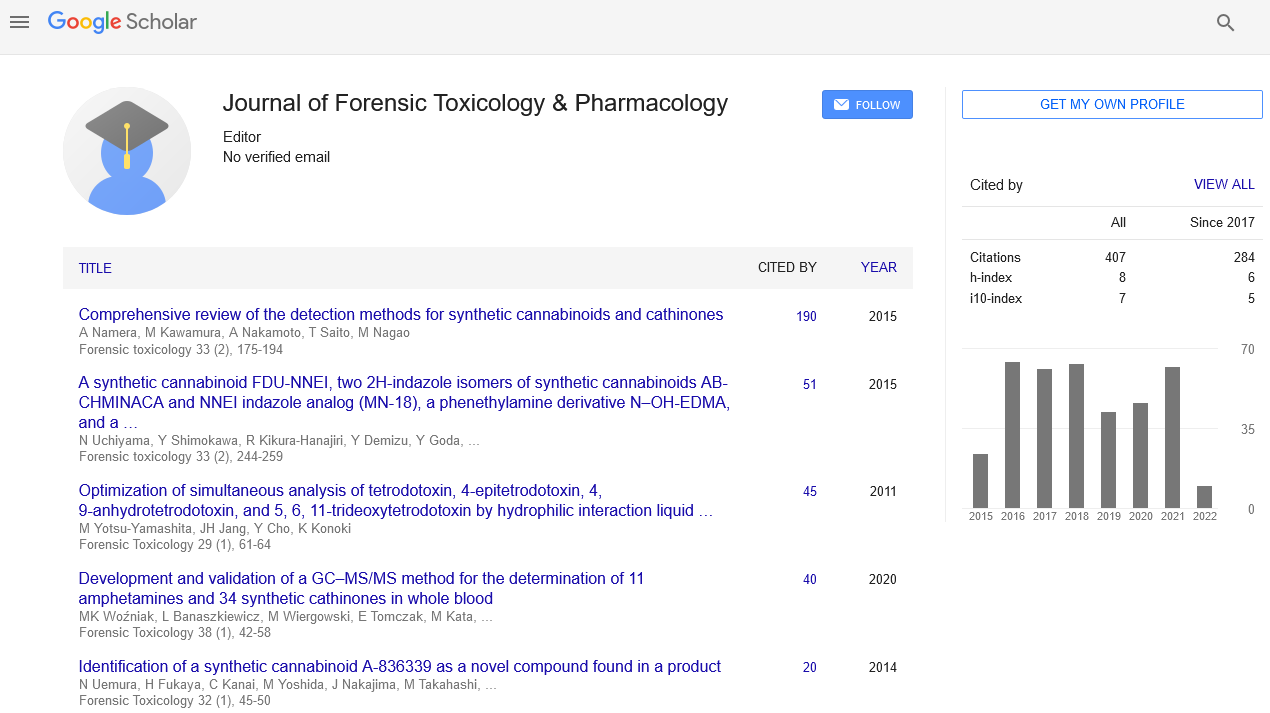Opinion Article, J Forensic Toxicol Pharmacol Vol: 13 Issue: 1
Environmental Forensics Stands with Nature's Applications in Environmental Remediation
Mäkelä-Eun Oh*
1Department of Forensic Sciences, Forensic Genetics Research Group, Oslo University Hospital, Oslo, Norway
*Corresponding Author: Mäkelä-Eun Oh,
Department of Forensic Sciences,Forensic
Genetics Research Group, Oslo University Hospital, Oslo, Norway
E-mail: Eun_oh120@hotmail.com
Received date: 23 February, 2024, Manuscript No. JFTP-24-130244;
Editor assigned date: 26 February, 2024, PreQC No. JFTP-24-130244(PQ);
Reviewed date: 12 March, 2024, QCNo JFTP-24-130244;
Revised date: 20 March, 2024, Manuscript No. JFTP-24-130244(R);
Published date: 28 March, 2024, DOI: 10.4172/JFTP.1000177
Citation: Oh M (2024) Environmental Forensics Stands with Nature's Applications in Environmental Remediation. J Forensic Toxicol Pharmacol 13:1.
Description
In the complex varieties of environmental science, forensic techniques serve as powerful tools for resolving mysteries hidden within ecosystems. Environmental forensics, a multidisciplinary field at the intersection of chemistry, biology, geology, and law, seeks to decipher the fingerprints left behind by human activities on the natural world. This study begin on an exploration of environmental forensics, explain on its principles, applications, and pivotal role in environmental justice.
Understanding environmental forensics
At its core, environmental forensics employs scientific methods to investigate environmental contamination, identify pollution sources, and apportion responsibility for environmental damage. Drawing upon principles from forensic science, environmental chemistry, and geospatial analysis, forensic investigators piece together evidence to reconstruct past events and trace the origins of pollutants. From contaminated sites and illegal waste disposal to oil spills and chemical accidents, environmental forensics plays a different role in understanding environmental crises and holding perpetrators accountable.
Principles and techniques
Environmental forensics encompasses a diverse array of techniques tailored to the specific challenges posed by different types of environmental contamination. Chemical fingerprinting techniques such as Gas Chromatography-Mass Spectrometry (GC-MS) and stable isotope analysis enable investigators to characterize pollutants and distinguish between natural and anthropogenic sources. Microbial forensics utilizes genetic markers and microbial community analysis to track the spread of contaminants and assess ecological impacts. Geospatial analysis and remote sensing techniques provide invaluable tools for mapping environmental damage, monitoring land use changes, and identifying potential sources of pollution.
Applications in environmental remediation
Environmental forensics plays a pivotal role in guiding environmental remediation efforts and restoring ecosystems affected by contamination. By accurately identifying the sources and pathways of pollutants, forensic investigations inform risk assessments and prioritize cleanup strategies. Isotopic fingerprinting techniques, for example, can help differentiate between multiple contamination sources and allocate responsibility among potentially liable parties. Furthermore, forensic evidence can be used to support legal proceedings and facilitate negotiations for environmental remediation costs.
Case studies in environmental justice
Numerous case studies underscore the importance of environmental forensics in achieving environmental justice and holding polluters accountable. The Exxon Valdez oil spill in 1989, for instance, triggered extensive forensic investigations to trace the origins of the spilled oil and assess its long-term impacts on the marine environment. Similarly, the Flint water crisis highlighted the role of environmental forensics in uncovering the extent of lead contamination in the city's water supply and identifying the systemic failures that contributed to the crisis. In each case, forensic evidence served as a catalyst for policy reforms, legal action, and efforts to prevent future environmental disasters.
Challenges and future directions
Despite its invaluable contributions, environmental forensics faces several challenges that warrant attention in the years ahead. Limited access to data, inadequate funding, and the complexity of environmental systems pose significant barriers to effective forensic investigations. Furthermore, emerging contaminants and unconventional pollution sources present new challenges that require innovative analytical techniques and interdisciplinary collaboration. Moving forward, efforts to enhance data sharing, improve analytical methodologies, and promote scientific integrity will be essential for advancing the field of environmental forensics.
Conclusion
Environmental forensics stands as a influence in the activity of environmental justice and sustainable control of our planet. By using scientific expertise and forensic techniques, environmental investigators shed light on the hidden impacts of human activities and advocate for the protection of vulnerable ecosystems. As we confront the challenges of pollution, climate change, and environmental degradation, the role of environmental forensics becomes increasingly vital. Through collaboration, innovation, and a steadfast commitment to scientific inquiry, we can harness the power of environmental forensics to safeguard the natural world for future generations.
 Spanish
Spanish  Chinese
Chinese  Russian
Russian  German
German  French
French  Japanese
Japanese  Portuguese
Portuguese  Hindi
Hindi 
